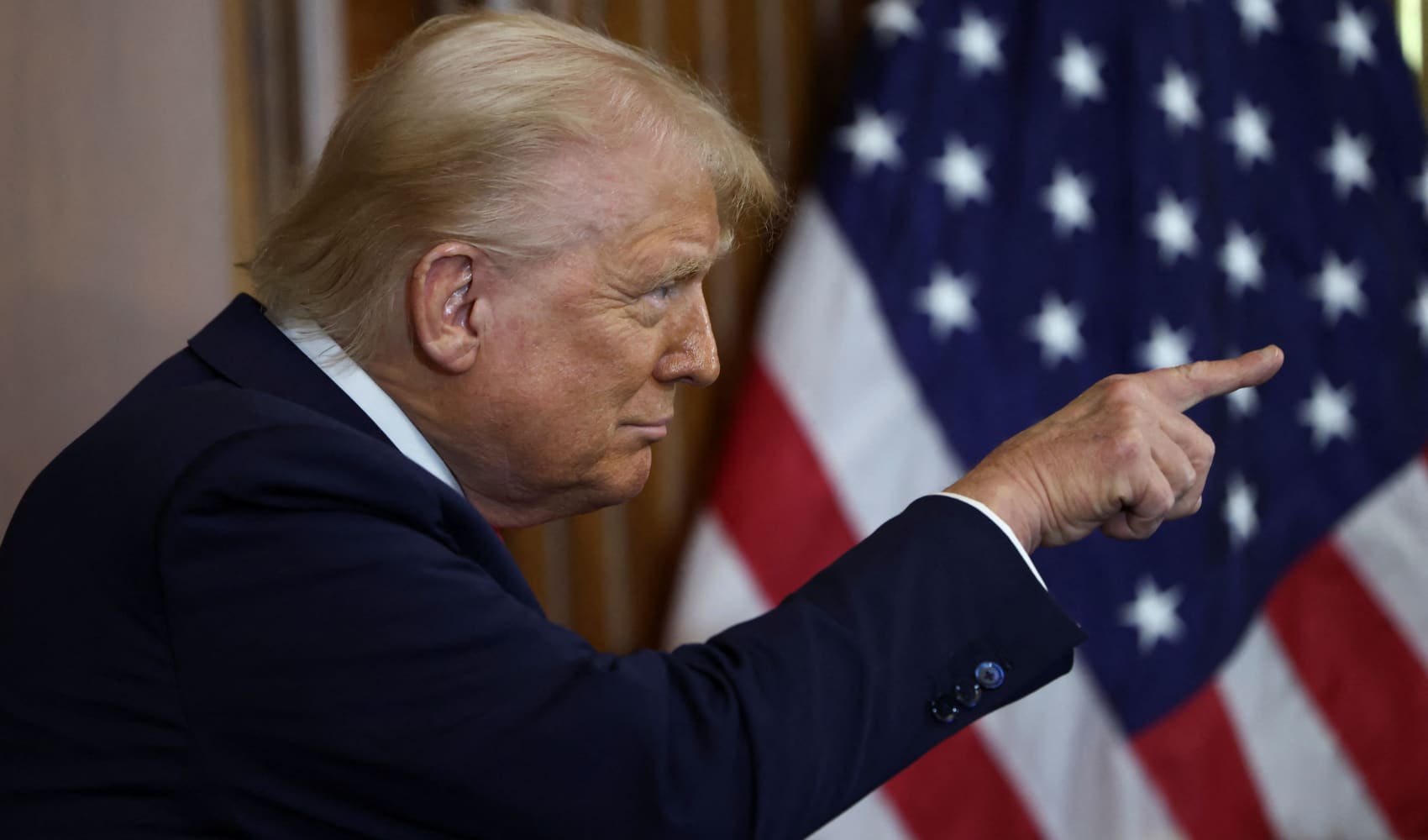Trump Tax Hike on Wealthy: How 39.6% Compares Historically
Trump Eyes Tax Hike? Unpacking the 39.6% Top Rate & Its History
Introduction: Is a Tax Hike on the Wealthy on the Horizon?
Hold on to your hats, folks! It looks like the winds of change might be blowing through the tax code again. President Trump, in a surprising move, is reportedly considering a tax hike on the wealthiest Americans. Now, I know what you're thinking: "Trump? Tax hikes? That doesn't sound right!" And you'd be right to be surprised. But let's dive into this developing story and see what's actually going on.
This isn't your average tax debate. We're talking about potentially reverting the top income tax rate back to 39.6% for those earning $2.5 million or more. Sounds like a lot, right? But how does that stack up against historical tax rates? And what does it all mean for your wallet and the economy? Let's break it down.
Trump's Proposal: A Reversion to 2017?
So, what exactly is Trump proposing? The core idea seems to be rolling back some of the tax cuts implemented in 2017. Specifically, the suggestion is to raise the top federal income tax rate from the current 37% back to the pre-2017 level of 39.6%. This would affect individuals earning $2.5 million or more. Think of it like turning back the clock on tax policy – a slight adjustment, but one that could have significant consequences for a select group of high-income earners.
The $2.5 Million Threshold: Who's Affected?
Okay, $2.5 million – that's a hefty sum. But who exactly are we talking about here? We're referring to individuals who report a taxable income of $2.5 million or more per year. That includes CEOs, high-powered lawyers, successful entrepreneurs, and anyone else whose earnings place them in the top income bracket. This isn't your average middle-class worker, so let's be clear about that.
GOP Resistance: A Hill to Climb?
Now, here's the kicker: this proposal isn't exactly being greeted with open arms by Trump's fellow Republicans. In fact, reports suggest that there's significant resistance within the GOP ranks. That's a pretty big hurdle, wouldn't you say? Passing any tax legislation requires navigating a complex political landscape, and internal disagreements can derail even the best-laid plans. So, the road ahead for this proposal might be a bit bumpy.
The Carried Interest Loophole: Another Target?
But wait, there's more! The discussion also includes closing the "carried interest loophole." What's that, you ask? Carried interest is a share of profits that investment managers receive, often taxed at a lower capital gains rate rather than the higher income tax rate. Closing this loophole would mean that these earnings would be taxed at the higher 39.6% rate, potentially generating more revenue for the government.
Historical Context: Top Tax Rates Through the Years
To really understand the significance of a 39.6% top tax rate, we need to take a trip down memory lane. The top tax rate has fluctuated wildly throughout U.S. history. Think about it, it’s been as high as 94% in the 1940s and as low as 28% in the late 1980s under Reagan. Understanding this context is crucial for evaluating the potential impact of Trump's proposal.
The Roaring Twenties to the Great Depression
In the roaring twenties, the top tax rate was a relatively modest 25%. But after the stock market crash of 1929 and the onset of the Great Depression, the rate began to climb, reaching 63% by 1932.
World War II and Beyond
The tax rate peaked during World War II, reaching an astounding 94% in 1944 and 1945. This was driven by the need to fund the war effort. In the post-war era, the rate remained high, hovering around 70% until the early 1980s.
The Reagan Era and Beyond
President Ronald Reagan famously slashed tax rates in the 1980s, bringing the top rate down to 28%. This was a key part of his supply-side economics philosophy. Since then, the rate has fluctuated, rising to 39.6% under Clinton, falling to 35% under Bush, and then returning to 39.6% before being lowered to 37% under Trump.
Economic Impact: What Could Happen?
So, what would be the economic impact of raising the top tax rate? Well, economists have differing opinions. Some argue that it would generate more revenue for the government, which could be used to fund important programs or reduce the national debt. Others fear that it would discourage investment and entrepreneurship, leading to slower economic growth. The truth likely lies somewhere in between.
Potential Revenue Generation
One of the most obvious benefits of a higher tax rate is the potential for increased revenue. This revenue could be used to fund government programs, reduce the deficit, or even pay for other tax cuts. However, the actual amount of revenue generated would depend on a number of factors, including how high the rate is set and how taxpayers respond to the change.
Impact on Investment and Entrepreneurship
Critics of higher tax rates often argue that they discourage investment and entrepreneurship. The theory is that if people have to pay a larger share of their income in taxes, they will be less likely to take risks and invest in new businesses. This could lead to slower economic growth and fewer job opportunities. Whether this is true is a hotly debated topic, with different studies reaching different conclusions.
Political Implications: A Shift in Strategy?
This potential tax hike raises some interesting political questions. Is Trump signaling a shift in strategy? Is he trying to appeal to a broader range of voters? Or is this simply a negotiating tactic to get other priorities through Congress? Only time will tell.
The Debt Dilemma: Funding the Future
Let's face it, the national debt is a major concern. And finding ways to fund government spending is a constant challenge. A tax hike on the wealthy could be seen as a way to address this issue, but it's just one piece of a much larger puzzle. There are no easy answers, and any solution will likely involve a combination of spending cuts, tax increases, and economic growth.
Public Opinion: What Do People Think?
What do the American people think about taxing the wealthy? Polls show that there's a wide range of opinions on this issue. Some people believe that the wealthy should pay a larger share of taxes, while others argue that high taxes stifle economic growth. Public opinion can play a significant role in shaping tax policy, so it's important to pay attention to what people are saying.
Global Perspective: How Do We Compare?
How does the U.S. tax system compare to those of other countries? Many developed nations have higher top tax rates than the U.S. However, they also often have different approaches to other taxes, such as value-added taxes (VAT). Comparing different tax systems can provide valuable insights into the pros and cons of various approaches.
Alternative Solutions: Other Options on the Table
Raising the top tax rate isn't the only option for addressing the debt or funding government programs. There are plenty of other ideas floating around, such as cutting spending, reforming the tax code, or promoting economic growth. Each of these approaches has its own advantages and disadvantages, and the best solution may involve a combination of different strategies.
Your Wallet: How Will This Affect You?
Unless you're earning $2.5 million or more, this particular proposal probably won't directly impact your personal finances. However, changes to the tax code can have ripple effects throughout the economy. For example, if a higher tax rate leads to slower economic growth, that could affect job opportunities and wages for everyone.
Conclusion: A Taxing Situation?
So, what's the takeaway from all of this? President Trump is considering a tax hike on the wealthiest Americans, a move that would revert the top tax rate to 39.6%. But there's significant resistance within the Republican party, and the economic impact is uncertain. This is just one piece of a larger debate about tax policy, government spending, and the national debt. It's a complex issue with no easy answers, and the outcome remains to be seen. The key takeaways are the proposal's potential impact on high-income earners, the political hurdles it faces, and the broader implications for the economy.
Frequently Asked Questions (FAQs)
1. What is the current top federal income tax rate?
The current top federal income tax rate is 37%, as set by the Tax Cuts and Jobs Act of 2017.
2. Who would be affected by the proposed tax increase?
The proposed tax increase would primarily affect individuals with taxable incomes of $2.5 million or more per year.
3. What is the "carried interest loophole," and why is it being discussed?
The carried interest loophole allows investment managers to have their share of profits taxed at lower capital gains rates. Closing this loophole is being discussed as a way to generate more tax revenue.
4. What are the potential economic consequences of raising the top tax rate?
The potential consequences include increased government revenue, but also potentially reduced investment and slower economic growth, depending on various factors.
5. Is there any support for this tax hike within the Republican party?
As of current reports, there appears to be significant resistance within the Republican party to raising the top tax rate.

